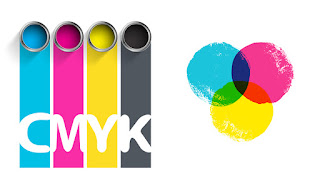1.The definition of water-based sublimation ink and oil pigment ink
"Water-based ink" is also called dye ink, including sublimation ink, molecular-level fully dissolved ink. This ink is a complete composite solution. The probability of blocking the ink head is very small. It is easy to be absorbed by the material after printing. It is characterized by bright colors, clear layers and price. It is also lower than pigment inks, so it is the first choice for printing photo products and making color inkjet cards. The disadvantage is that the photo itself is not waterproof, and because the dye molecules are quickly decomposed under ultraviolet light, which causes obvious fading within one month of outdoor ultraviolet light, it is usually added to the surface during the production process. After the film is applied, the photo can be completely waterproof as well as the oily ink photo, and the effect of the oil film (sue surface), bright (glossy surface), cloth pattern, and laser can be exhibited in the photos through different types of film. |
| Thermal Sublimation Ink |
2.Advantages and disadvantages of two inks
Oil pigment ink. It is most suitable for printing on perforated materials because it is dried by absorption. They are formulated with vegetable oil or mineral oil. It is especially useful in the field of cardboard packaging; it is not suitable for use in confined office spaces because Air pollution is generated. The colorants used can be divided into two types: pigment type and dye type. Oil-soluble type inks are characterized by fast drying, so they are commonly used in industry.Oil-soluble type inks are characterized by fast drying, so they are commonly used in industry.
 |
| Sublimation Transfer Ink |
Summary: Why is oil pigment ink a trend? Water-based sublimation transfer inks have the characteristics of low cost and smooth texture, but they are easy to fade and discoloration, and the printing effect is very general. Oil inks are more suitable for printing on different materials, such as toys, leather, wood, glass, materials, acrylic and other materials. Applicable industries are also more extensive. The printed effect is also not easy to fade. Generally speaking, it can be kept outdoors for 3 years, and it can be 5 years without fading. If it is indoor, it can be fading for 10 years. UV flatbed printers with ink ink can be said to be the golden partner of the latest technology combination.
More Info:
Website: www.skyimagepaper.com
Company Name: Fei Yue Digital Technology Co.,LTD
E-mail: sales@feiyuepaper.com
Tel: 86-025-86628894
Whatsapp: +86 15007920742
Address: Central Road 323, Nanjing, Jiangsu, China
Website: www.skyimagepaper.com
Company Name: Fei Yue Digital Technology Co.,LTD
E-mail: sales@feiyuepaper.com
Tel: 86-025-86628894
Whatsapp: +86 15007920742
Address: Central Road 323, Nanjing, Jiangsu, China
没有评论:
发表评论